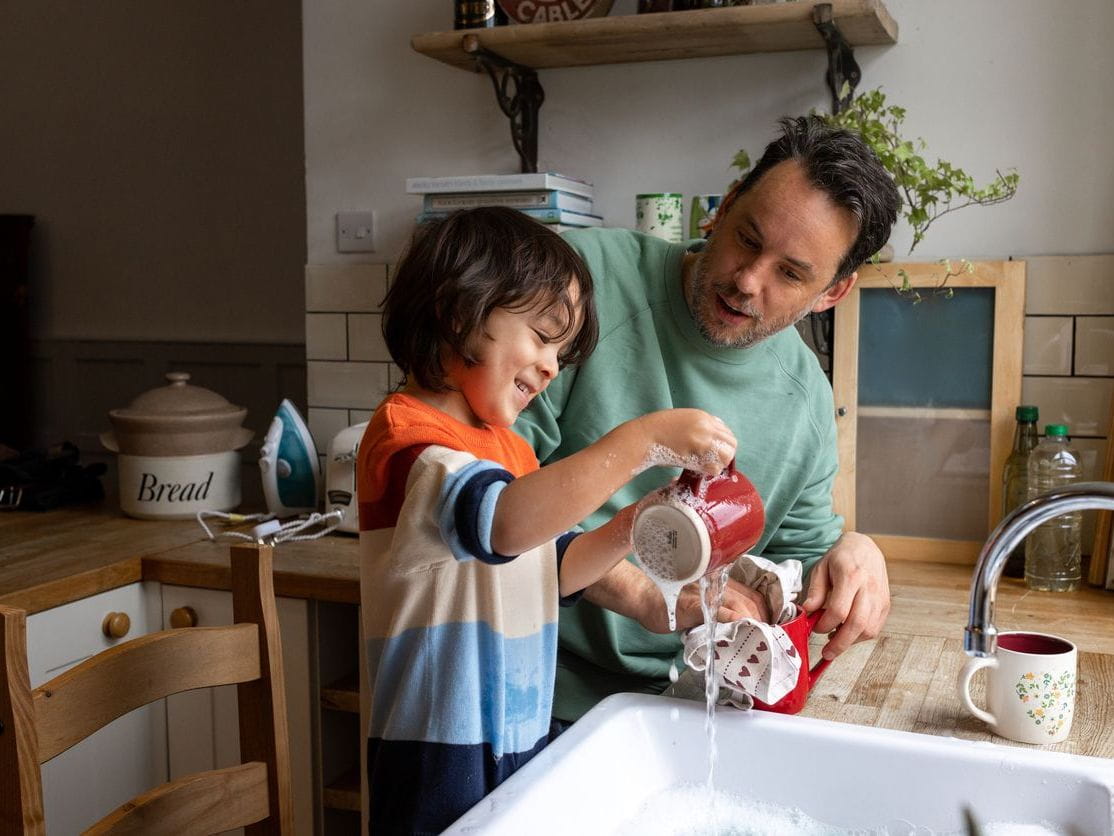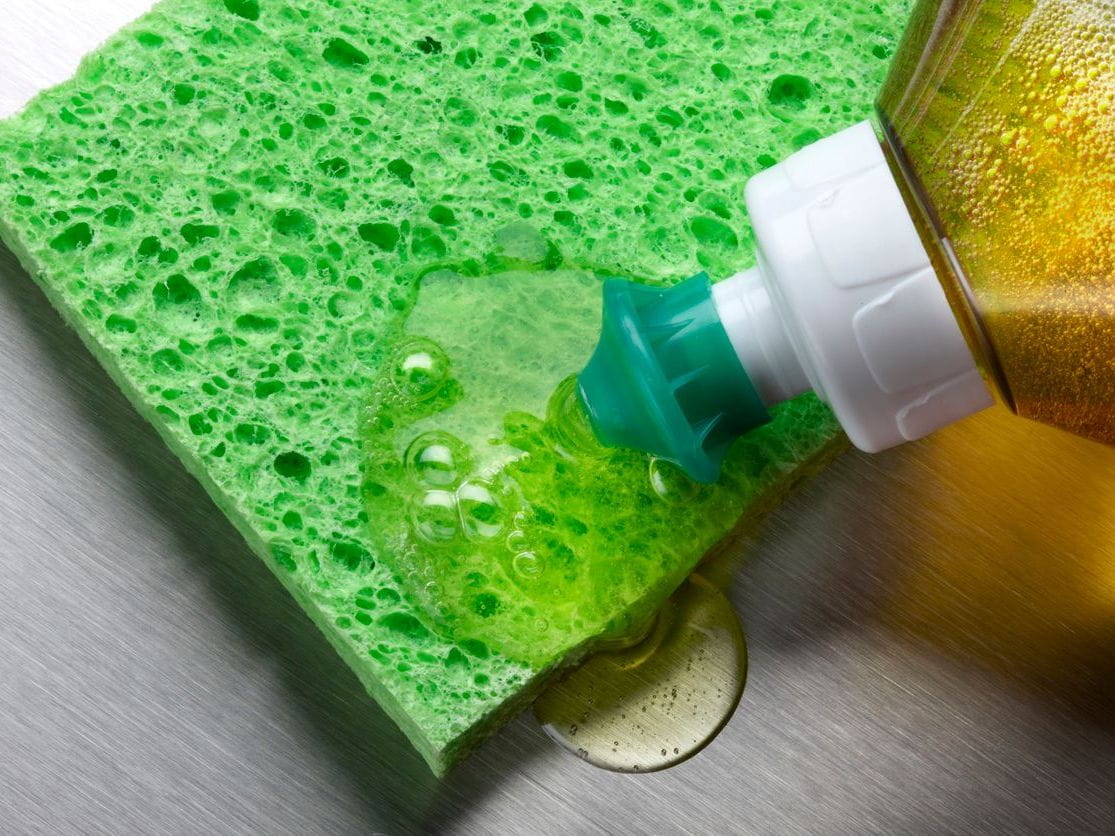What to Know About Dish Soap

The Bottom Line
Dish soap contains ingredients that help with hand-washing dishes, household cleaning, and removing oils from the skin. It can also be helpful when treating poison ivy. If swallowed, it can cause nausea, vomiting, or diarrhea. If splashed in the eyes, it can cause eye irritation. Dish soap should not be mixed with other household products as this can produce dangerous fumes.

What’s in dish soap?
Dish soaps and detergents can have many different ingredients depending on the manufacturer. They are usually made of surfactants, chemical compounds that break down grease. They also contain enzymes that help break down food residue. They often have added colors, perfumes, dyes, and scrubbing agents. Some dish soaps have ingredients that limit the growth of bacteria.What can dish soap be used for?
Dish soap is often used for cleaning a variety of surfaces and household items. Dish soap has also been used for removing oil from wildlife found near oil spills, since it contains ingredients that help remove oil and grease but is still gentle enough to use on skin, hair, feathers, and fur.Dish soap and water can be used in emergency rooms to decontaminate or remove harmful substances from the skin. Dish soap has also been known to be abused, by adding it to urine specimens in the hopes of passing a urine drug test. However, this method is not reliable and has resulted in false-positive results for some drugs and false-negative results for others.
What happens if you drink dish soap water?
Drinking dish soap water or dish soap alone will usually result in minor effects. A person may experience nausea, vomiting, or diarrhea after drinking a small amount. Serious effects are less likely to occur when drinking dish soap water since the soap is diluted. Some people have also reported having allergic reactions to dish soap. Additionally, damage to the lungs might occur if choking occurs and the dish soap becomes trapped in the lungs.What to do if you get dish soap in your eyes.
Most dish soaps can irritate the eye, causing redness or stinging. It is best to find out the specific product involved, as damage to the eye can be caused by strong acid or base ingredients. These strong ingredients are not usually found in dish soaps, but can be found in many household cleaning products. If dish soap gets into the eye, it is best to rinse the eye immediately with water and call Poison Control for guidance.Can you mix bleach and dish soap, or vinegar and dish soap?
Mixing cleaning products can be dangerous. When certain products are mixed, they can create a toxic gas. Many dish soaps contain a variety of ingredients. Some of these ingredients can be acidic, while other ingredients can contain bleach and are considered “basic” or “alkaline.” Mixing bleach and an acid (e.g., vinegar) can create chlorine gas while mixing bleach with ammonia (often found in glass cleaners) can create chloramine gas. These fumes can damage the lungs. It is always best to avoid mixing products, including dish soap.Can you use Dawn dish soap for treating poison ivy?
Poison ivy contains urushiol, which causes an allergic reaction on the skin. This can be painful, with bumps, intense itching, rash, blisters, and redness often occurring. It is important to wash the skin right away after exposure to poison ivy. Carefully wash to ensure that all areas, including those under the fingernails, are cleaned. A dish soap like Dawn can be used to help remove the oil. Soaps and scrubs made specifically for poison ivy, such as Tecnu®, have been shown to be helpful as well.What should I do if someone swallows dish soap?
If someone swallows dish soap, rinse the mouth with water and take small sips of water. Then, seek guidance from Poison Control immediately. Use the online webPOISONCONTROL tool for help or contact the Poison Control Center by phone at 1-800-222-1222. Online or on the phone, Poison Control is always free, confidential, and available 24 hours a day.Arika Williams, PharmD, CSPI
Pharmacist and Certified Specialist in Poison Information
Poison Control Media Information
Did you find this page helpful? If so, we need your support. Poison Control is in constant competition with misinformation online. Links to www.poison.org or our webPOISONCONTROL triage tool from other websites and blogs help internet searchers quickly find accurate information and Poison Control’s contact information in an emergency. If you use the content from this page, please provide attribution via a link back to this page, www.poison.org, or https://triage.webpoisoncontrol.org/#!/exclusions. By doing so, you could save a life. Thank you!
Poisoned?
Call 1-800-222-1222 or
Prevention Tips
- Store household cleaning products, including dish soap, securely and out-of-sight of children.
- Keep household cleaning products in their original labeled containers.
- Avoid mixing household cleaning products as dangerous fumes could be produced.
This Really Happened
A 62-year-old woman accidentally swallowed dishwater with dish soap in it. She did not have any symptoms at the time. She contacted Poison Control and confirmed that she did not have any trouble breathing, trouble swallowing, or mouth irritation. Poison Control advised that she did not swallow a toxic amount, discussed what symptoms to look out for, and recommended taking sips of water to dilute the soap. Poison Control contacted her the following day and she reported only some nausea, with no vomiting or diarrhea.References
Wagoner MD. Chemical injuries of the eye: current concepts in pathophysiology and therapy. Surv Ophthalmol. 1997;41(4):275-313. doi:10.1016/s0039-6257(96)00007-0
Sharma A. Ophthalmic Principles. In: Nelson LS, Howland M, Lewin NA, Smith SW, Goldfrank LR, Hoffman RS. eds. Goldfrank's Toxicologic Emergencies, 11e. McGraw Hill; 2019. Accessed August 24, 2023. https://accessemergencymedicine-mhmedical-com.proxygw.wrlc.org/content.aspx?bookid=2569§ionid=210269260
Nelson LS, Odujebe OA. Simple Asphyxiants and Pulmonary Irritants. In: Nelson LS, Howland M, Lewin NA, Smith SW, Goldfrank LR, Hoffman RS. eds. Goldfrank's Toxicologic Emergencies, 11e. McGraw Hill; 2019. Accessed July 11, 2023. https://accessemergencymedicine-mhmedical-com.proxygw.wrlc.org/content.aspx?bookid=2569§ionid=210264279
Froberg B, Ibrahim D, Furbee RB. Plant poisoning. Emerg Med Clin North Am. 2007 May;25(2):375-433.
Stibich AS, Yagan M, Sharma V, Herndon B, Montgomery C. Cost-effective post-exposure prevention of poison ivy dermatitis. Int J Dermatol. 2000 Jul;39(7):515-8.
Poisoned?
Call 1-800-222-1222 or
Prevention Tips
- Store household cleaning products, including dish soap, securely and out-of-sight of children.
- Keep household cleaning products in their original labeled containers.
- Avoid mixing household cleaning products as dangerous fumes could be produced.
